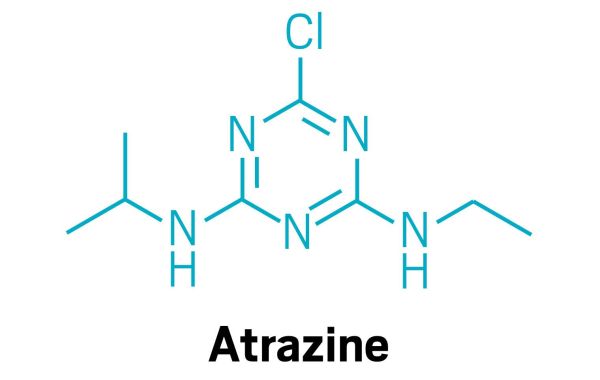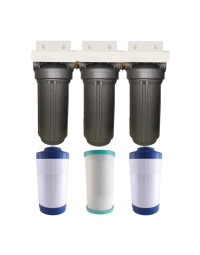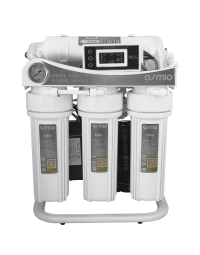Why is Atrazine a Problem in Water?
Atrazine is a herbicide commonly used in agriculture to control weeds and enhance crop yields. While it is effective for its intended purpose, atrazine poses significant environmental concerns when it enters water sources. The following reasons explain why atrazine in water is a problem:
- Human Health Risks: Atrazine-contaminated water can pose health risks to humans, even at low concentrations. Studies have linked exposure to atrazine with various health issues, including hormonal disruptions, developmental problems, and an increased risk of certain cancers.
- Ecological Impact: Atrazine's persistence and ability to travel through runoff water make it highly mobile in the environment. When it reaches streams, rivers, and lakes, it can harm aquatic life, including fish, amphibians, and aquatic plants. This disruption to the ecosystem can lead to a decline in biodiversity and the degradation of habitats.
- Water Contamination: Atrazine is prone to leaching into groundwater and can contaminate drinking water sources. Municipal water treatment facilities may not effectively remove all atrazine, leading to potential human exposure through drinking water.
- Resistant Weeds: Over time, repeated use of atrazine can lead to the development of herbicide-resistant weeds. This phenomenon forces farmers to use even stronger chemicals or adopt different farming practices, further impacting the environment.
- Regulatory Concerns: Due to the environmental and health risks associated with atrazine, many countries have established regulations on its use and maximum allowable levels in water. Meeting these regulations can be challenging and costly for agricultural operations.
Given the widespread use of atrazine in agriculture and its potential to contaminate water sources, it is essential to implement proper management practices and find effective methods to filter atrazine out of water. Sustainable agricultural practices, precision application techniques, and improved water treatment methods are some of the ways to address the atrazine problem and safeguard both human health and the environment.
How to Filter Atrazine Out of Water
Filtering atrazine out of water can be a challenging task due to its persistence and low solubility. Atrazine is a herbicide commonly used in agriculture, and its presence in water sources can be harmful to human health and the environment. Several methods can be employed to remove atrazine from water. Here are some commonly used techniques:
- Activated Carbon Filtration: Activated carbon is a highly effective adsorbent that can remove atrazine from water. It works by attracting and binding the atrazine molecules to its surface. This method is commonly used in water treatment facilities and home water filters.
- Reverse Osmosis: Reverse osmosis is a water purification process that uses a semi-permeable membrane to remove contaminants, including atrazine. It is especially effective for removing dissolved substances from water.
- Granular Ferric Hydroxide (GFH) Filtration: GFH is a high-surface-area adsorbent that can efficiently remove atrazine and other pollutants from water. It works by adsorbing the atrazine molecules onto its surface.
- Biological Filtration: Certain microorganisms can degrade atrazine through biological processes. Constructed wetlands or biofiltration systems can be designed to take advantage of these microorganisms to remove atrazine from water.
- Chemical Oxidation: Chemical oxidation processes involve using powerful oxidants to break down atrazine into less harmful substances. One common chemical used for this purpose is potassium permanganate.
- UV Photolysis: Ultraviolet (UV) light can break down atrazine molecules into less toxic components. UV photolysis is often combined with other treatment methods for enhanced effectiveness.
- Ozonation: Ozone treatment involves injecting ozone gas into water to oxidize and break down atrazine molecules. It is commonly used in advanced water treatment processes.
- Ion Exchange: Ion exchange resins can be used to selectively remove atrazine ions from water by exchanging them with harmless ions attached to the resin.
It is important to note that the choice of the appropriate method will depend on factors such as the concentration of atrazine, the volume of water to be treated, available resources, and the level of purity required. For large-scale water treatment, a combination of different methods may be employed in a treatment train to ensure effective atrazine removal. Always consider consulting with water treatment experts and regulatory authorities to ensure compliance with local regulations and best practices.








